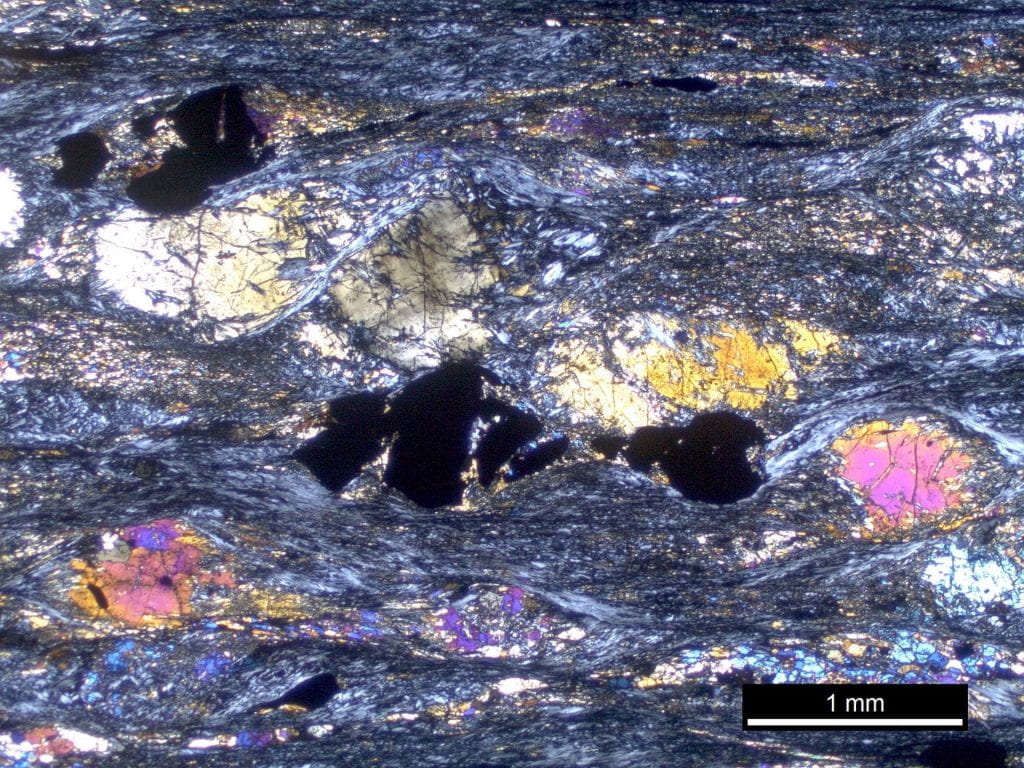We study the microstructures of naturally deformed rocks to infer the importance of specific deformation processes, and then develop experiments to investigate the sensitivity of these processes to a range of deformation conditions.



Rheology and microstructural evolution of serpentine

Serpentine is a group of hydrous minerals that is commonly formed along faults and other interfaces in Earth where water is able to react with other anhydrous minerals. Because serpentine has a number of unusual physical properties, it is hypothesized that serpentine-group minerals play an essential role in the dynamics of boundaries between tectonic plates. Furthermore, serpentine may control where earthquakes can or cannot occur. However, serpentine is only stable through a narrow range of pressure and temperature conditions, which has hindered experimental efforts to unravel its behavior. The objective of this project is to clarify further the rheology and associated deformation microstructures of antigorite, the high pressure and temperature phase of serpentine, using a variety of experimental techniques.
The theory of plate tectonics is the basis for most Earth science, providing context for interpreting such diverse phenomena as earthquakes and volcanoes, mountain building, and global climate. In spite of its broad scientific and societal importance, there are still fundamental unanswered questions about the underlying physical mechanisms that enable Earth-like plate tectonics. The goal of this study is to better understand how large shear strains modify the rheological properties of realistic rocks, and identify the conditions where these data deviate from experiments conducted to small strains on monomineralic material. These data are used to interpret field geological observations of highly sheared rocks from plate boundaries.
Microphysical evolution of highly sheared polymineralic rocks

Using Micromechanical Experiments to Investigate the Rheology of Geologic Materials

The rheology of geologic materials is mainly responsible for controlling mantle convection, plate tectonics, and the formation of mountains. The objective of this project is to investigate the viscoplastic rheology of geological materials using micromechanical methods, including nanoindentation and micropillar compression testing. In a nanoindentation test, a sharp indenter is pushed into a specimen of interest with a precisely controlled amount of force, typically to depths of tens to hundreds of nanometers. A simultaneous record of the force and the displacement is used to assess the elastic and plastic response of the test specimen. In a micropillar compression test, a column of material with a diameter as small as a few hundred nanometers is fabricated using a focused ion beam (FIB). Using a nanoindentation instrument equipped with a cylindrical probe, uniaxial compression tests are performed to determine the mechanical response of the micropillar over a range of deformation conditions.